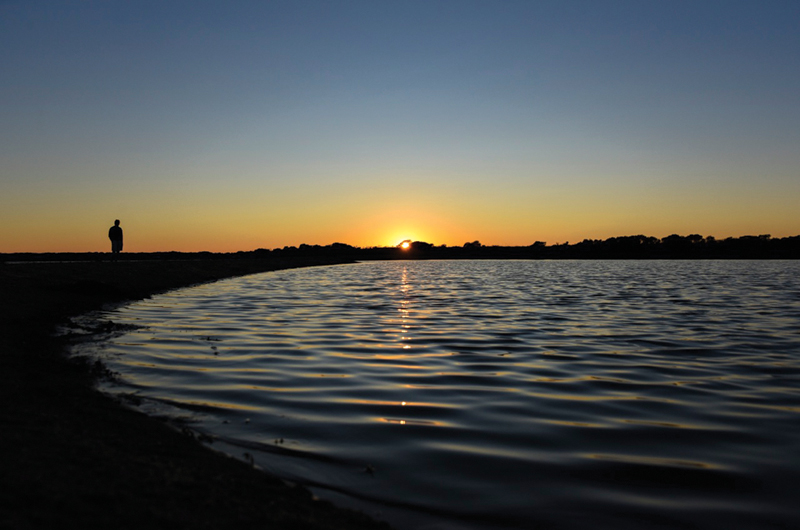For many homeowners, the arrival of spring weather is a signal to start home improvement projects and resume lawn care in earnest. I am not one of those homeowners. I think about where I can catch white perch in Island great ponds – a delicious treat – and I look forward to the April arrival of the first striped bass along the Island’s south-facing beaches.
Honing a laissez-faire style of homeownership required years of studied neglect and strategic indifference to accepted behavior – and an understanding spouse who recognizes her inability to force me past my self-imposed limitations. And I suppose it helps that we do not live in a formal subdivision subject to an aesthetic sense of the Vineyard that runs counter to my concept of rural charm – one man’s boat cooler collection is another man’s blight.
Once, in the blush of new home ownership, I somewhat diligently spread lime and fertilizer based on a schedule tied to a corporate marketing campaign designed to sell me more of the stuff – four bags for four steps. Then it occurred to me that the more of the stuff I spread, the faster my weeds grew, but my “lawn” always looked the same.
Eventually I concluded that a lawn composed of green weeds is as good as green grass and it requires far less maintenance. I no longer fertilize. I like to claim that I am environmentally conscious, but to be honest I am just uninterested in lawn care. I now mow about as often as I get a haircut – which happens with less and less frequency as my hairline recedes with age.
I do not own a mower. Instead I regularly borrow my next door neighbor’s, which frees up room in my shed for fishing and hunting gear. Most of my mowing activity occurs in early summer when rainfall is more plentiful. Once the late July, early August Island drought hits, our yard becomes a sandplain grassland, giving me another environmental touchstone.
And Norma, my wife, has seen enough of my carpentry skills to know that home projects are best left to professionals. The wooden trash barrel container I built that would not accommodate the barrels with the lid down because I failed to account for the interior floor is the stuff of family legend. All of which leaves me with plenty of time to go fishing.
My spring efforts focus on white perch. A relative of the striped bass, which they resemble in a chunky sort of way, white perch are feisty and make great sport on light tackle for kids of any age.
 White perch are found in ponds, lakes, and rivers, and in fresh and salt water from the Carolinas to Nova Scotia. They prefer brackish conditions and may be found in Edgartown and Tisbury Great Ponds, particularly in late March and April when they move into shallow coves to spawn.
White perch are found in ponds, lakes, and rivers, and in fresh and salt water from the Carolinas to Nova Scotia. They prefer brackish conditions and may be found in Edgartown and Tisbury Great Ponds, particularly in late March and April when they move into shallow coves to spawn.
A flyrod or light spinning outfit suitable for trout is more than adequate to catch white perch, which are aggressive once located. Bottom fishermen use earthworms, clam pieces, and squid on a small hook attached to a weight. Perch will also hit lures that include spinners, jigs, and flies. I have had good luck casting a Worden’s one-sixth-ounce rooster tail.
White perch tend to travel in schools. Find a school and you will have good action. Experienced Island fishermen often bring along a pail of fresh clams, some of which are used for bait and some of which get smashed and tossed into the water in order to attract and hold fish in one spot. The best perch fishing tends to occur in the late afternoon, often not until sunset, when the fish move into the coves, which can make for a chilly outing.
The average white perch caught in Island waters is about ten inches long and weighs about one pound, but larger fish are not unusual. For example, the winning white perch entered in Coop’s Bait & Tackle’s annual spring fishing contest are generally about fourteen inches and weigh close to two pounds. The state record is three pounds, eight ounces, caught in October 2006 in Wachusett Reservoir.
In the spring the largest perch will be females stuffed with roe. Many fishermen opt to release these breeders in favor of the smaller fish, which are males. State regulations limit fishermen to twenty-five fish, a minimum of eight inches in length.
White perch are quite tasty. They can be a little tricky to fillet due to a wide rib cage, but all it takes is a little practice. I prefer to chill my catch overnight because I find it firms up the flesh. Pan or deep fry (with panko bread crumbs) and serve with lemon for a delicious meal.
I particularly enjoy fishing for white perch because I am often treated to a display of aerial acrobatics by newly arrived pairs of osprey, wheeling and diving and calling to each other in the coves where they hunt for fish. The moment when an osprey stops, tucks its wings, and dives straight down in a flight that ends with a splash of success or failure is quite a sight.
The Martha’s Vineyard Land Bank’s Sepiessa Reservation in West Tisbury is a good spot to shake off winter’s pallor on a warm spring afternoon and fish for white perch. There is always the possibility of hooking into a winter holdover striped bass. Or, if all else fails, there’s that lawn that needs attention.





